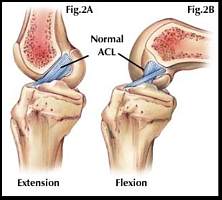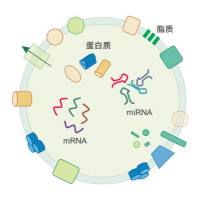两种新型骨水泥的组织学和生物力学研究
互联网
摘 要:我们研制了两种可被骨长入的骨水泥:一种是部分可吸收的骨水泥(PRC),以双酚x-甲基丙烯酸甘油酯(Bis-GMA)为基质,混合硅铝陶瓷和可吸收性聚合体颗粒调制成;另一种是磷酸钙骨水泥(CPC),由磷酸三钙、一水磷酸二氢钙、二水磷酸二钙和黄原胶组成。将这两种骨水泥分别植入家兔股骨和胫骨髁的骨缺损中,植入后2、4、12和24周取材,进行组织学观察和生物 力学测试。结果发现,CPC组有递增的骨整合,伴有生物 降解及巨噬细胞出现,力学测试显示抗压强度在4周之前一直降低,4周后才轻微升高,弹性模量随时间普遍降低。到第4周时,组织学观察还发现新生骨与CPC边缘直接接触。整个观察过程中未发现炎症反应。PRC组,骨整合及生物 降解都很轻微,但在各个观察阶段,其抗压强度比松质骨和CPC组高(p<0.05),在4周之前,它的弹性模量高于松质骨和CPC组,4周后低于松质骨。(Bone25:41S―一45S;1999)。
HISTOLOGICAL AND BIOMECHANICAL STUDIES OF TWO BONE COLONIZABLE CEMENTS IN RABBITS
j. X. Lu,I. About,G. Stephan(Laboratoire Interface Matrice Extracellulaire Biomateriaux, Faculte d, Odontologie, Marseille, France)
Abstract:We have developed two colonizable bone cements: the first is a partially resorbable bisphenol-x-glycidyl methacrylate(Bis-GMA)-based cement (PRC) and the second is a calcium phosphate cement (CPC). PRC is composed of aluminous silanized ceramic and particles of a bioresorbable polymer embedded in a matrix of bis-GMA. CPC consisted of tricalcium phosphate, monocalcium phosphate monohydrate, dicalcium phosphate dihydrate, and xanthane. Both cements were implanted into cavities drilled in rabbit femoral and tibital condyles. After 2, 4, 12, and 24 weeks of implantation, histological observations and biomechanical tests were performed. With CPC. a progressive osteointegration with a concomitant biodegradation in the presence of macrophages were observed. The mechanical study revealcd a decrease of the compressive strength until the 4th week, followed by a slight increase. There was a general decrease in the elastic modulus with time. Moreover, by week 4, the histological study showed that the new bone was in direct contact with CPC margins. No inflammation was observed during the observation period. With pRC, the osteointegration as well as the biodegradation were slight, but its compressive strength was higher than that of cancellous bone and CPC (P<0.05) ar all observation periods, Its elastic modulus was greater than that of cancellous bone and CPC until the 4th week, then fell under the values of the cancellous bone.(Bone 25: 41s-45s; 1999).
Keywords:Bone cement, Bisphenol-x-glycidyl methacrylate, Calcium phosphate, Rabbit, Osteointegration, Biodegradation. Biomechanics参考文献:
[1]Amstutz, H. C., Campbell, P., Kossovsky, N., and Clarke, I. C. Mechanism and clinical significance of wear debris-induced osteolysis. Clin Orthop 276: 7~18; 1992.
[2]Bowen, R. L,. Properties of silica-reinforced polymer for dental restorations, J Am Dent Assoc 66: 57~64; 1963.
[3]Coe. M. R., Fechner. R. E., Jeffrey. J. J., Balian, G., and Whitehill, R. Characterzation of tissue from the bone-Ploymethylmethacrylate interface in a rat experimental model. J Bone Joint Surg 71-A:863~874; 1989.
[4]Council on Dental Materials and Devices. Polymers used in dentistry: part Ⅱ Resins containing a bis-GMA: coation and cementing uses. J Am Dent Assoc 90: 841~843; 1975.
[5]Davies. J. P., O’Connor. D. O., Burke D. W., Jasty, M., and Harris. W. H. The ettect of centrifugation on the fatigue life of bone cement in the presence of surface irregularities. Clin Orthop 229: 156~161; 1988.
[6]Harving. S., Soballe. K., and Bunger. C. A method for bone cement interface thermometry. Acta Orthop Scand 62: 546~548; 1991.
[7]Herman. J. H., Sowder. W. G., Anderson. D., Appel, A. M., and Hopson, C. N. polymethylmethacrylate-induced release of bone-resorbing factors. J Bone Joint Surg 71: 1530~1541; 1989.
[8]Ikenaga. M., Hardouin, P., Lemaitre, J., Andrianjatovo, H., and Flautre, B. Biomechanical characterization of a biodegradable calcium phosphate hydraulic cement: a comparison with porous biphasic calcium phosphate ceramics. J Biomed Mater Res 40: 139~144; 1998.
[9]Linder, L. Tissue reaction to methyl-methacrylate monomer. Acta Orthop Scand 47:3~10; 1998.
[10]Liu. C. S., and Shen. W. Effect of crystal seeding on the hydration of calcium phosphate cement. J Mater sci: Mater Med(special)8: 803~807; 1997.
[11]Lu. J. X., Gallur, A., Flautre. B., Anselme, K., Descamps. M., Thierry, B., and hardouin. P. Comparative study of tissue reactions to calcium phosphate ceramics among cancellous. cortical, and medullar bone sites in rabbits. J Biomed Mater Res 42: 357~367; 1998.
[12]Lu. J. X., Flauter, B., Anselme, K., Gallur, A., Descamps, M., Thierry, B., and hardouin, P. Role of interconnections in porous bioceramics on bone recolonization in vitro and in vivo. J Mater sci: Mater Med 10: 111~120; 1999.
[13]Noble, P. C., and Swarts, E. Penetration of acrylic bone cements into cancellous bone. Acta Orthop Scand 54: 566~573; 1983.
[14]Standard ISO 5833. Implants for Surgery: Acrylic Resin Cements. Geneva, Switzerland: International Standards Organization; 1992: 13~18.
[15]Ohura, K., Bohner, M., Hardouin, P., Lemaitre, J., Pasquier, G., and flautre, B, Resorption of, and bone formation from, new β-tricalcium phosphate-monocalcium phosphate cements: an in vivo study. J Biomed Mater Res 30: 193~200; 1996.
[16]Stito, M., Maruoka, A., Mori, T., Sugano, N., and Hino, K, Expermental studies on a new bioactive bone cement: Hydroxyapatite composite resin. Biomaterials 15: 156~160; 1994.
[17]Tamura. J., Kawanabe, K. Kobayashi, M., et al. Mechanical and biological properties of two types of bioactive bone cements containing MgO-CaO-SiO2-P2O5-CaF2 glass and glass-ceramic powder. J Biomed Mater Res 30: 85~94; 1996.
[18]Wixson. R, L., Lautenschlager, E. P., and Novak. M. A. Vacuum mixing of acrylic bone cement. J artgrop; asty 2: 141~149; 1987.
<center> <p> </p> </center>
上一篇:生物软组织的幂律形式松弛和蠕变函数 下一篇:中药对股骨头坏死修复愈合机制的探讨







